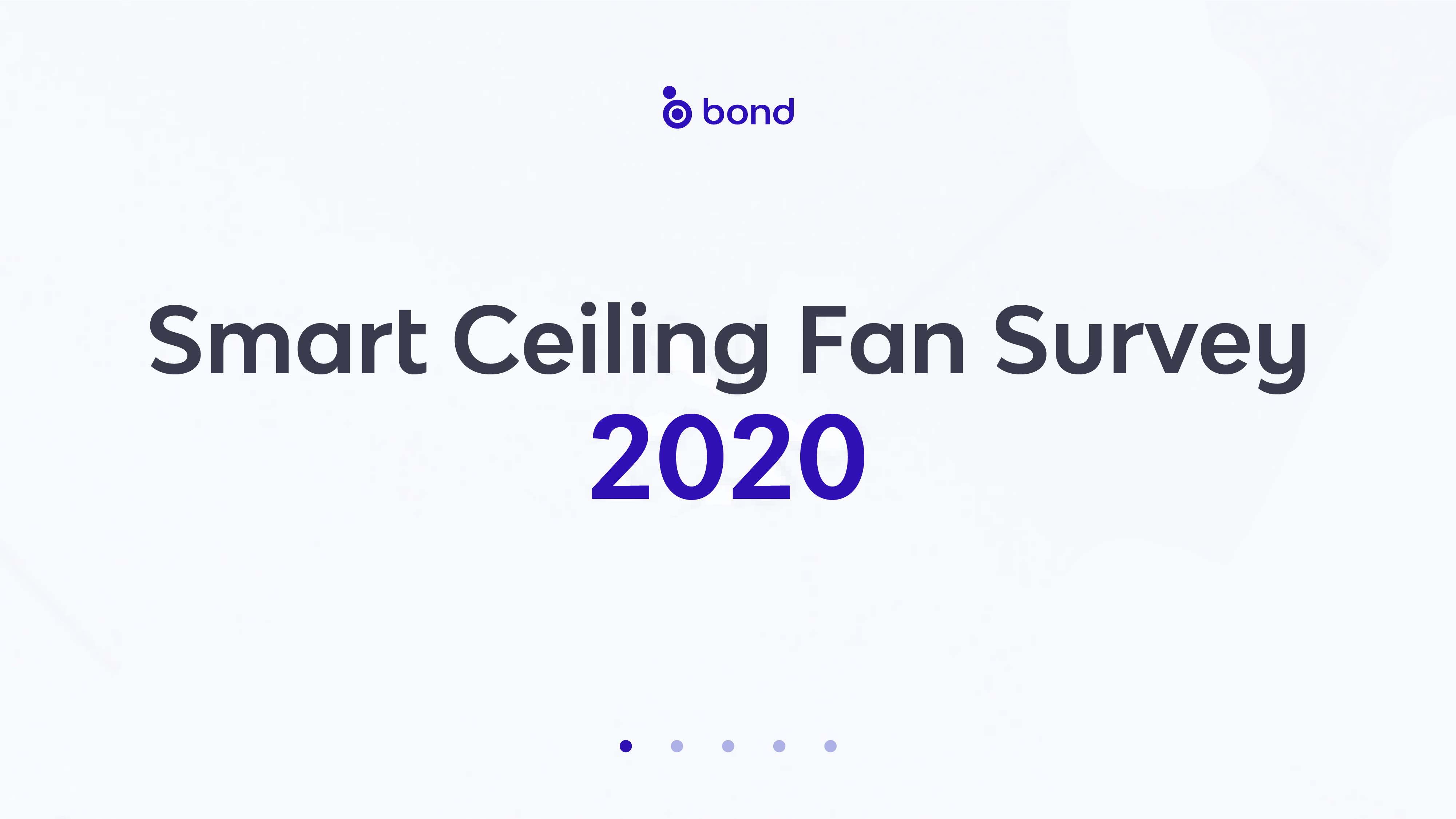
2020 was a year of tremendous growth in the connected ceiling fan industry. With Bond’s user base quadrupling, the magnitude of our annual smart ceiling fan survey grew significantly. We reached out to 40,000 of our most active users and compiled their answers below.
Team Bond is focused on connecting ceiling fans to the smart home, regardless of whether consumers wish to connect their existing fans using the Bond Bridge (Legacy fans), or shopping for new smart ceiling fans.
We are currently working with the majority of the brand names within the ceiling fan industry to launch smart ceiling fans.
Why?
- The first survey question was: Why are you interested in smart ceiling fans?

These results are very similar to the results we presented last year and it is clear that convenience and voice control are the two leading reasons for users to add smart appliances to their home.
The Opportunity of a New Network Effect
The network effect in the smart home is the phenomenon by which the value or utility a user derives from a good or service, depends on the number of other compatible products.
In our case, it’s clear that smart home and home automation value to the user increases as more devices and appliances in the house are connected and can respond in context to the user’s needs.
- We asked: How important is Wi-Fi connectivity of a ceiling fan in your next purchase decision?
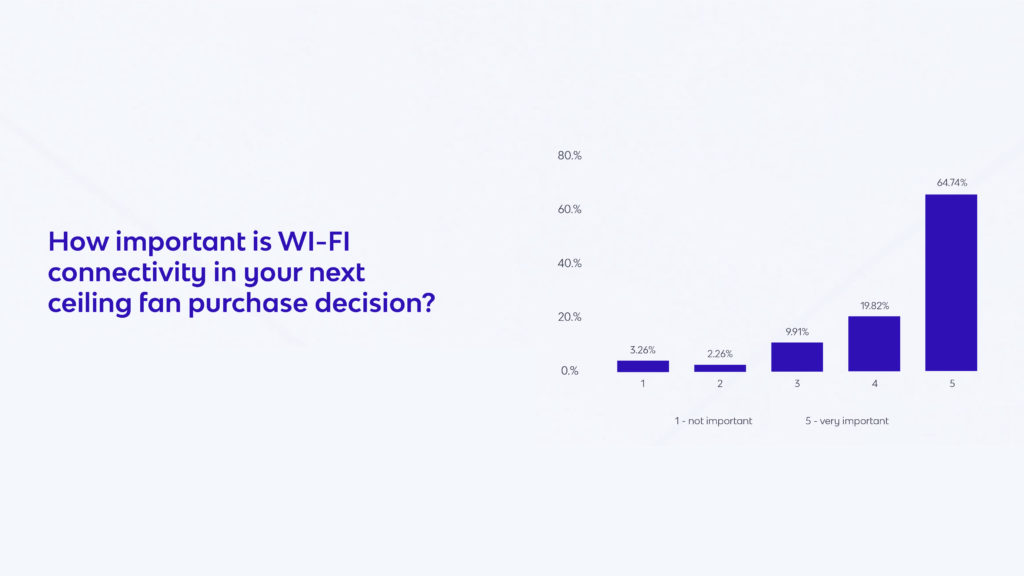
We attribute this strong preference for smart ceiling fans in the purchasing decision to the network effect. For ceiling fan manufacturers and retailers this is an opportunity to capture market share by offering multiple models with Wi-Fi connectivity. It is very clear from the data that any manufacturer that delays the introduction of a smart fan will potentially lose market share.
We wanted to compare this with another important factor in purchasing decisions: brand.
Brand
- We asked: How important is the ceiling fan brand in your purchase decision?
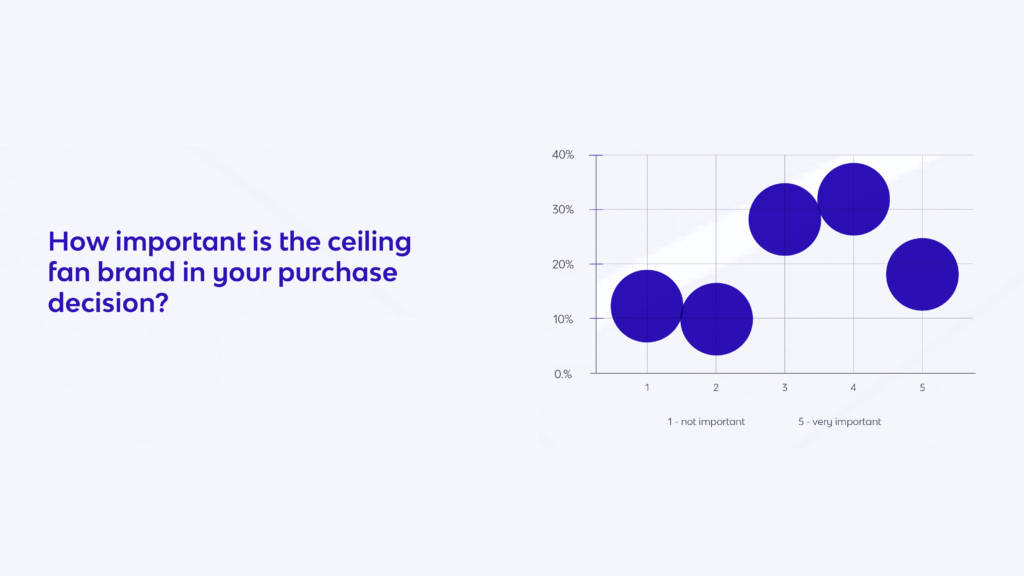
Brand is an important factor in the purchasing decision, but surprisingly it’s lower than the connectivity functionality. Only 50% of users graded the importance of brand 4 and 5 compared with 84% who graded Wi-Fi at 4 and 5.
This is an interesting trend especially when some of the user experience migrates from the manual operation of the fan to voice using either Amazon Alexa or Google assistant. This demonstrates that users are increasingly removed from the brand of the ceiling fan. Based on this, it is clear that it is more challenging for the brand to differentiate its value to the customer as both Amazon and Google have owned the purchasing experience and now also provide an interface for the device usage and overall experience.
The upside is that manufacturers who understand IoT can leverage connectivity as a point of engagement and drive a relationship with their users through news releases, coupons, additional features, and brand-related promotions directly. This will realign the brand with the customer and bypass the moat that tech giants are creating around the customer.
Features & Differentiation
We asked our users’ preferences about different features such as RGB lighting, temperature sensor, proximity sensor, etc. Not a single feature received more “must-have“ responses than the Wi-Fi local vs. cloud control.
The difference between “local” Wi-FI control and “cloud” is that the latter will work only as long as it has an internet connection and that the device manufacturer maintains a cloud connection with the device. Local Wi-Fi controlled devices will work whether there is an internet connection or not, and regardless of whether the device manufacturer still offers cloud connectivity or not.
Smart home users have unfortunately found that cloud-only device operations are dependent on factors that they have little control over. If the device or appliance manufacturer is not able to support the product, the device will stop working.
We asked: How important is it for you that your fan will work, even without an internet connection?
Another reason for users to prioritize local Wi-Fi connectivity in addition to the cloud (not instead), is the growing concern about privacy.
And lastly, professionally installed home automation systems require a local API (local Wi-Fi) in order to integrate the device to the whole home automation system.
Wi-Fi is not just a feature…
- We asked: Would you be interested in registering a new smart fan with the manufacturer through the app?
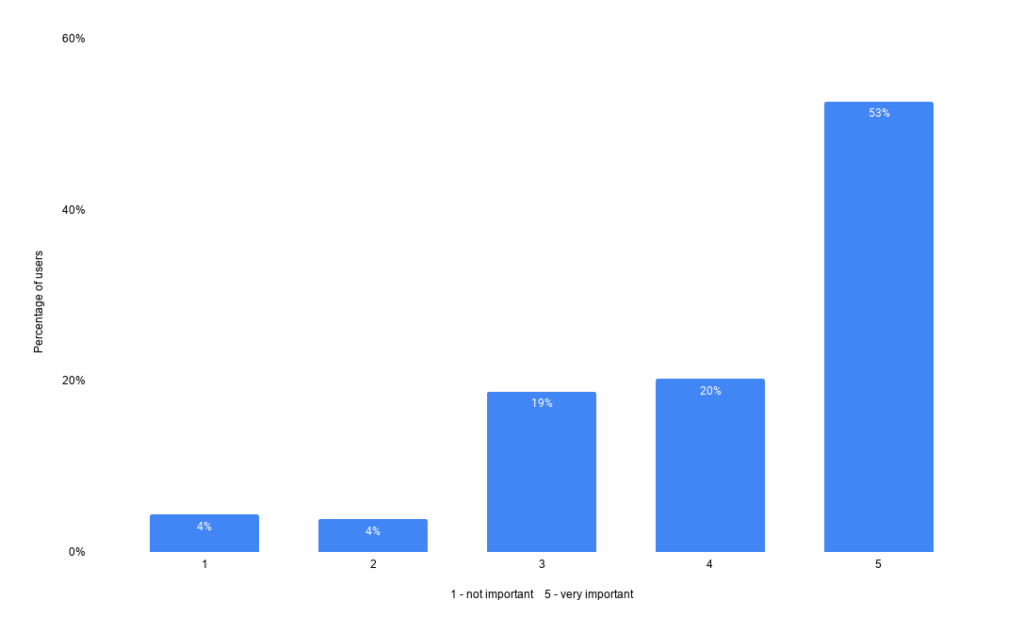
Clearly, the data shows a strong consumer attitude toward registering the product through the app. This is not surprising to anyone who is reading this survey… mailing a piece of paper or searching a manufacturer’s website and manually entering data is an archaic way of interacting with users. Users look for convenience and, at the same time, value registering their product.
Offering product registration in the app can be a differentiator for the fan manufacturer. This brings value to the user and can be used as a marketing tool and data analysis for product development with end-user consent.
Many manufacturers that we work with today do not know how to market directly to customers/consumers. The tech giants have made it clear that anyone that does not know their customers will suffer brand erosion and reduction in margin over time. This type of IoT is a way for fan manufacturers to bypass the moat that the tech giants are creating around their customers.
- We asked: How important is in-app customer support?
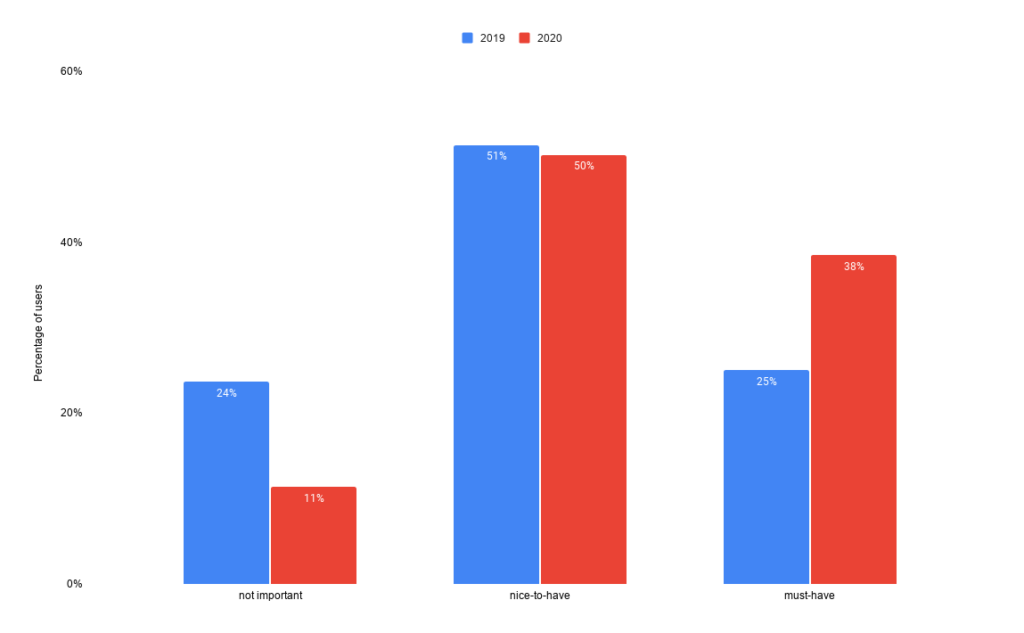
Although we are already providing in-app 7-day-a-week customer support for all the smart fans that are powered by our IoT platform, customers are expecting the ceiling fan manufacturer, or the retailers, to be involved as well. You can see the dramatic increase from 2019 to 2020 of how many users think that it is a “must-have” when the fan becomes smart. This drives the change in customer expectations and their perception of who should be supporting them.
Again, with the change in the retail environment and who has taken ownership of customers, as well as the customer journey, customer service is another area for differentiation -if done correctly.
Cost Sensitivity
The ceiling fan industry is very price-sensitive and competitive, and this is one of the reasons why Wi-Fi connectivity adoption took longer than other home appliances industries.
This is how we know that consumer willingness to pay for Wi-Fi connectivity is important in making product design decisions.
- We asked: How much extra would you be willing to spend for a smart ceiling fan?
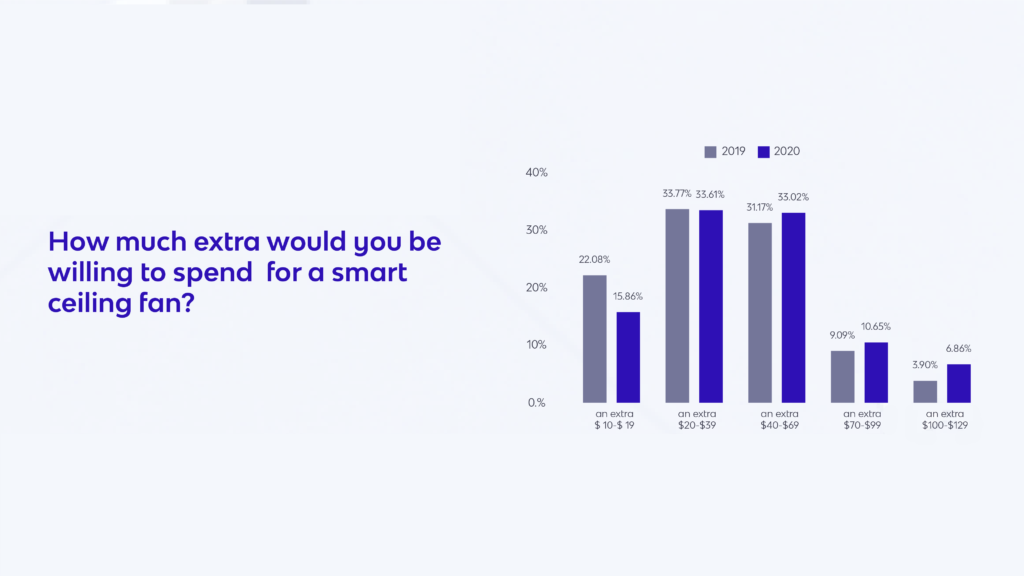
There is a small increase in user willingness to pay in 2020 compared with 2019. The number of users that are willing to pay $100-$129 more, jumped two-fold, but they still represent a small percentage of users. Similar to last year, a majority of customers are willing to pay between $20-$69 more compared with a non-connected ceiling fan.
Based on these results and the fact that the cost of WiFi connectivity is only a small fraction of what users are willing to pay, this is an opportunity for fan manufactures to increase their profit per smart ceiling fan sold.
Conclusions
- Customers who currently own a smart fan will most likely buy only a smart fan from this point on. This is an opportunity for manufacturers who are able to launch connected products to meet this customer demand.
- The tech giants have altered the customer shopping experience, but IoT gives the manufacturer, and retailers with a private brand, an opportunity to engage directly with users and avoid commoditization.
- Customers are demanding a superior experience through immediate customer support, in-app product registration, etc. This is an opportunity for the manufacturer to differentiate and develop a relationship with the customer and increase brand loyalty leading to more spending over time.
- The majority of users are willing to pay between 4-15 times more than the manufacturer’s cost of connectivity. Some manufacturers may see Wi-Fi connectivity as a cost adder when it can actually be a profit driver.
- Consumers value local Wi-Fi connectivity more than any other feature a smart fan can offer because it allows the fan to work without cloud connectivity. We expect this trend to strengthen further over time as security and privacy demands increase.